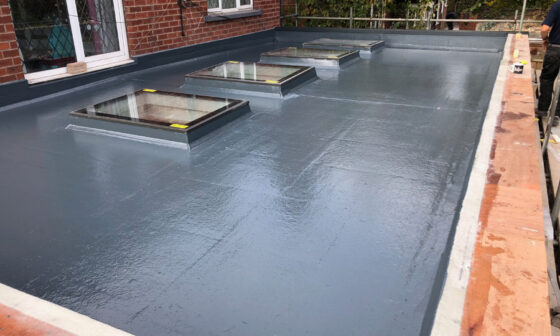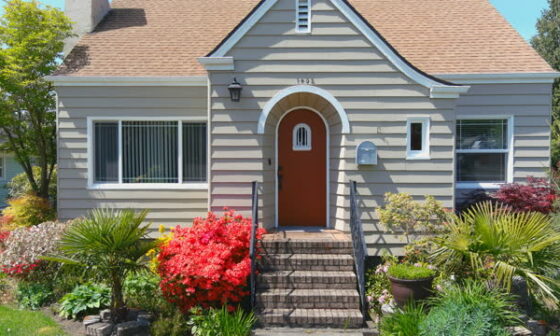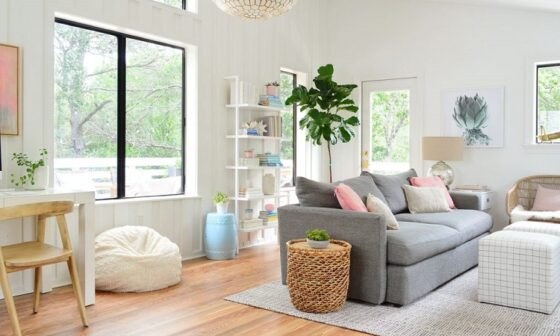Breeze blocks, also known as cinder blocks, are versatile building material that can be used for a range of applications, from garden walls to industrial structures. While breeze blocks are durable and functional, they may not always be the most visually appealing. If you are looking for how to paint breeze blocks and spruce them up with a fresh coat of paint, here’s a step-by-step guide to help you get started.
What You’ll Need
Before you begin painting your breeze blocks, you’ll need to gather the necessary supplies. Here’s what you’ll need:
- Paintbrushes
- Paint rollers
- Paint trays
- Paint primer
- Masonry paint
- Drop cloths or newspaper
- Painter’s tape
Step 1: Clean the Breeze Blocks
The first step in painting breeze blocks is to clean them thoroughly. Use a stiff-bristled brush and a mixture of warm water and mild detergent to scrub away any dirt, dust, or grime. Once you’ve cleaned the breeze blocks, rinse them with a hose or pressure washer and let them dry completely.
Step 2: Apply Painter’s Tape
To avoid getting paint on any surrounding surfaces or areas you don’t want to paint, apply painter’s tape to the edges of the breeze blocks. Make sure the tape is firmly in place and that there are no gaps or bubbles where paint can seep through.
Step 3: Apply Primer
Next, apply a coat of paint primer to the breeze blocks. Use a paintbrush or roller to apply the primer evenly, covering the entire surface of each block. Allow the primer to dry completely before moving on to the next step.
Step 4: Apply Masonry Paint
Once the primer is dry, you can begin applying the masonry paint. Choose a high-quality masonry paint that’s suitable for exterior use, as this will ensure a long lasting and durable finish. Again, use a paintbrush or roller to apply the paint evenly, covering the entire surface of each block. Allow the first coat of paint to dry completely before applying a second coat, if necessary.
Step 5: Remove Painter’s Tape
Once the paint is dry, you can carefully remove the painter’s tape from the edges of the breeze blocks. If there are any areas where the tape has pulled up the paint, use a small brush to touch up those spots.
Step 6: Clean Up
Finally, clean up your painting supplies and dispose of any drop cloths or newspaper used to protect the surrounding area. Store your leftover paint and supplies in a safe and dry place for future use.
Tips for Painting Breeze Blocks
Here are some tips to keep in mind when painting breeze blocks:
-
Choose the Right Paint: Make sure to choose a high-quality masonry paint that’s suitable for exterior use. This will ensure that your breeze blocks are protected from the elements and will maintain their color and finish over time.
-
Use a Primer: Applying a coat of paint primer before painting your breeze blocks can help the paint adhere better and provide a smoother finish. Make sure to use a primer that’s suitable for use on masonry surfaces.
-
Clean Thoroughly: Breeze blocks can accumulate dirt, dust, and grime over time, so it’s important to clean them thoroughly before painting. Use a stiff-bristled brush and warm water with mild detergent to scrub away any debris.
-
Use Painter’s Tape: To avoid getting paint on surrounding surfaces or areas you don’t want to paint, use painter’s tape to protect the edges of the breeze blocks.
-
Apply Evenly: When applying paint to breeze blocks, make sure to apply it evenly using a paintbrush or roller. This will ensure a smooth and uniform finish.
-
Allow to Dry Completely: Make sure to allow each coat of paint to dry completely before applying another coat or removing the painter’s tape. This will help to prevent smudging or smearing.
-
Touch Up as Needed: If you notice any areas where the paint has been pulled up by the painter’s tape, use a small brush to touch up those spots before the paint dries completely.
By keeping these tips in mind and following the step-by-step guide outlined in the previous article, you can achieve a professional-looking finish when painting your breeze blocks.
Summary
Painting breeze blocks is a simple and effective way to transform the look of your building or structure. By following these steps and using the right materials, you can achieve a professional-looking finish that will protect your breeze blocks and enhance their appearance for years to come.


